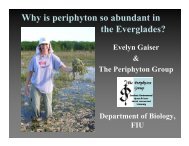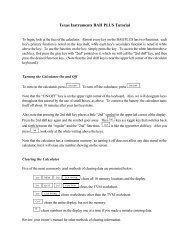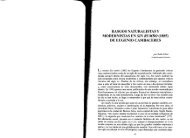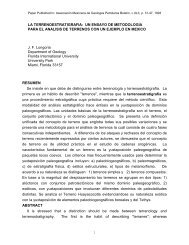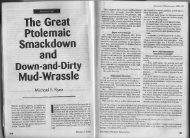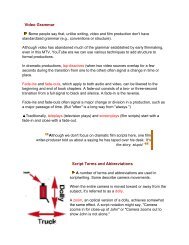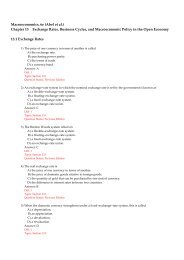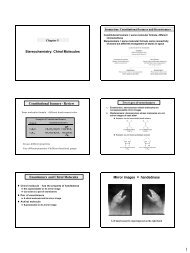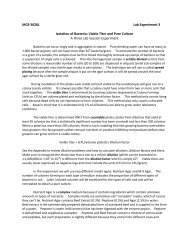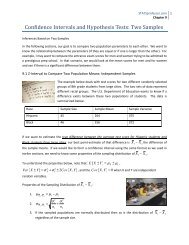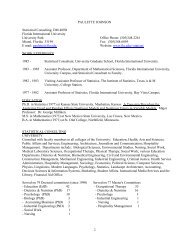Women in Astronomy En Hedu'Anna 2354 BC (Akkad/Sumer ...
Women in Astronomy En Hedu'Anna 2354 BC (Akkad/Sumer ...
Women in Astronomy En Hedu'Anna 2354 BC (Akkad/Sumer ...
Create successful ePaper yourself
Turn your PDF publications into a flip-book with our unique Google optimized e-Paper software.
<strong>Women</strong> <strong>in</strong> <strong>Astronomy</strong><br />
<strong>En</strong> <strong>Hedu'Anna</strong> <strong>2354</strong> <strong>BC</strong> (<strong>Akkad</strong>/<strong>Sumer</strong> - Mesopotamian)<br />
Second recorded technical name; First technical recorded name: Imhotep (Great<br />
Pyramid).<br />
Daughter of K<strong>in</strong>g Sargon I: empire jo<strong>in</strong>ed <strong>Sumer</strong> and <strong>Akkad</strong>; later became<br />
Babylon. (He was <strong>Akkad</strong>ian).<br />
<strong>En</strong> (means "high priestess") <strong>Hedu'Anna</strong> was appo<strong>in</strong>ted by her father to be the head<br />
priestess of the Moon god's temple <strong>in</strong> Ur. Nanna - moon god; Innana - goddess.<br />
"Chief Priestess of the Ornament of Heaven." First of 500 years of high<br />
priestesses; important <strong>in</strong> government - father was cement<strong>in</strong>g sovereignty;<br />
priestesses confirmed rulers. Temples were also places of learn<strong>in</strong>g and governance,<br />
and places used for observ<strong>in</strong>g the sky - study<strong>in</strong>g motions etc.<br />
Disk (heavily restored) is <strong>in</strong> the University of Pennsylvania Museum<br />
(Astronomically speak<strong>in</strong>g, Babylonian records are the first we have: they gave us<br />
the basis for our modern calendars and 360 degrees <strong>in</strong> a circle. Us<strong>in</strong>g Babylonian<br />
records, Hipparchus discovered the precession of the Earth's rotation axis.)<br />
Oldest known author (identifies herself; writes <strong>in</strong> first person). 42 poems rema<strong>in</strong>,<br />
mostly to her goddess. Nanna - moon god; Innana - goddess<br />
"<strong>En</strong> <strong>Hedu'Anna</strong> is the last <strong>in</strong> a long l<strong>in</strong>e of women who followed the stars and the<br />
cycles of the Moon and whose names are lost to us. She is the first <strong>in</strong> a long l<strong>in</strong>e<br />
of women whose names we know - the women who thought, created and built for<br />
the past 4000 years."<br />
Aglaonike (c. 200 <strong>BC</strong>)<br />
"First woman astronomer"<br />
Greek (Thessaly); knew how to predict eclipses - 'could make the moon disappear<br />
at will.' She was thought to be a witch! She is mentioned by Plutarch as be<strong>in</strong>g able<br />
to "call the moon down" from the sky... In Orpheus and Euridice she was the evil<br />
high priestess of the moon-goddess Hecate.
Hypatia (c. 370 - 415 AD)<br />
This engrav<strong>in</strong>g is from the book "Little Journeys to the Homes of<br />
Great Teachers" by Elbert Hubbard (New York: Roycrafters), 1908 [4000 years<br />
site]<br />
Daughter of Theon (mathematician, philosopher); he worked <strong>in</strong> the Museum of<br />
Alexandria - precursor to universities. He educated Hypatia, who got further<br />
tra<strong>in</strong><strong>in</strong>g and then became an <strong>in</strong>structor at the Platonist School. She was considered<br />
a "charismatic orator." She was generally regarded highly and was very popular.<br />
She wrote commentaries on mathematics, and helped her father edit his<br />
commentary on Ptolemy's Almagest. She is considered the first "true astronomer."<br />
Her popularity and connection with the Neoplatonists (pagans) got her <strong>in</strong> trouble<br />
politically with the early Christians of the time, especially Cyril, the patriarch<br />
(bishop) of Alexandria. Neoplatonists were considered rivals of Christians. Her<br />
friendship with Orestes, the Roman prefect, led to her death: she was attacked and<br />
killed by a mob as part of the rivalry between Cyril and Orestes. She was torn<br />
apart and used as a example: she was a scientist and pagan - so used "magic and<br />
mysticism" accord<strong>in</strong>g to the early Christians!<br />
Her death marks the beg<strong>in</strong>n<strong>in</strong>g of the end of scholarship <strong>in</strong> Alexandria, as many<br />
scholars beg<strong>in</strong> to leave.<br />
Her works (edit<strong>in</strong>g?) <strong>in</strong>clude<br />
Euclid's Geometry<br />
A Commentary on the Arithmetica of Diophantus<br />
A Commentary on the Conics of Apollonious<br />
She edited the third book of her father's Commentary Ptolemy's Almagest<br />
Sophia Brahe (1556 - 1643); Tycho's sister<br />
10 years younger than Tycho, she was educated by tutors and by Tycho himself. As<br />
a teenager, she assisted him <strong>in</strong> his observations and calculations at his observatory,<br />
Uraniborg, on the island of Hven. She left upon her marriage, but returned 10<br />
years later, after her husband's death. With Tycho, she helped compile a very<br />
accurate star catalog and database of planetary positions and motions (but receives<br />
little historical credit). She was also a horticulturist, a healer, and a historian. She
was disowned by her parents upon Tycho's death <strong>in</strong> 1601, and remarried. She later<br />
supported herself by horoscopes and heal<strong>in</strong>g. Died age 87.<br />
Marie Cunitz (1610 - 1664)<br />
"...simplified, and 'corrected'" Johannes Kepler's work. Kepler was hired by Tycho<br />
Brahe, and used 'his' (their!) data to determ<strong>in</strong>e how the planets moved (Kepler's<br />
three laws of Planetary Motion). She was born <strong>in</strong> Silesia (Poland); which was torn<br />
by strife. She was educated by her father, and encouraged <strong>in</strong> her <strong>in</strong>tellectual<br />
pursuits by her husband. She spoke 7 languages, and was versed <strong>in</strong> astronomy and<br />
mathematics. In her book "Urania Propitia", she added orig<strong>in</strong>al work to Kepler's<br />
Rudolph<strong>in</strong>e Tables: new tables and methods, and <strong>in</strong>cluded a more simple and<br />
direct solution to "Kepler's Problem." Her work made Kepler's contributions<br />
available to a much wider range of people. She published her "translations" of<br />
Kepler's works <strong>in</strong> 1648 - they were delayed for a few (two?) years due to the 30<br />
years War. These translations were the only ones available to scholars of her time<br />
for years to come. She became so well known that she was called Urania Propitia<br />
: closest to the muse of <strong>Astronomy</strong>, Urania. She has a crater, Cunitz, named after<br />
her on Venus.<br />
Carol<strong>in</strong>e Herschel (1750 - 1848)<br />
Sister of William Herschel. Born <strong>in</strong> Germany <strong>in</strong>to a musical family (dad); mom<br />
only believed <strong>in</strong> educat<strong>in</strong>g the boys (4 boys, 2 girls) though. She had typhus at age<br />
10, which stunted her growth (she was 4' 3"!) and, <strong>in</strong> her parents' op<strong>in</strong>ion, ru<strong>in</strong>ed<br />
her chances for marriage. At 22, when her older brother William offered to pay<br />
their mother for a maid to replace her, she left Germany to work with William <strong>in</strong><br />
<strong>En</strong>gland. He started as a professional musician, but gave it up for full-time<br />
astronomy after his discovery of the planet Uranus. Carol<strong>in</strong>e, who became well<br />
known as a s<strong>in</strong>ger, had been assist<strong>in</strong>g him with his observations; eventually she<br />
became his apprentice. She ground and polished mirrors, took data, and did the<br />
calculations. She detected and recorded her observations of nebulae (only<br />
detectable because of William's f<strong>in</strong>e telescopes). William gave her her own<br />
telescope, and with it she discovered her first comet <strong>in</strong> 1786. K<strong>in</strong>g George gave her<br />
a pension (œ50) (as he had for William - œ200) <strong>in</strong> recognition of her discovery -<br />
she became the first "professional" woman astronomer - she got paid for her work!<br />
She eventually discovered 8 comets and made a catalog of over 2500 nebulae. She
also mentored and worked with her nephew John, William's son, who became a<br />
well known astronomer <strong>in</strong> his own right. She was awarded a gold medal by the<br />
Royal Astronomical Society <strong>in</strong> 1828 (at the age of 78; she died at 98!).<br />
http://wwwgroups.dcs.stand.ac.uk/~history/Mathematicians/<br />
Herschel_Carol<strong>in</strong>e.html<br />
1786 - 1797: discovered 8 comets<br />
1798 - published (RAS) an <strong>in</strong>dex + corrections to Flamsteed's star catalog<br />
1822 - returned to Hanover upon William's death; cont<strong>in</strong>ued to assist John by<br />
compil<strong>in</strong>g a catalog of 2500 nebulae<br />
1828 - Gold medal from RAS<br />
1835 - Honorary membership to RAS (with Mary Somerville; first 2 women)<br />
1838 - membership <strong>in</strong> Irish Royal Academy<br />
1846 - Gold medal from K<strong>in</strong>g of Prussia<br />
Mary Somerville (1780 - 1872)<br />
Born <strong>in</strong> Scotland; died <strong>in</strong> Italy. One of 4 (surviv<strong>in</strong>g) children (2 boys, 2 girls) <strong>in</strong> a<br />
well-to-do family that didn't believe <strong>in</strong> educat<strong>in</strong>g their two daughters - just taught<br />
Mary to read (not write!). But after about age 10, she determ<strong>in</strong>ed to educate herself<br />
and began read<strong>in</strong>g everyth<strong>in</strong>g she could f<strong>in</strong>d, although she was criticized for it by<br />
her family, except for her uncle. He encouraged her and helped her learn Lat<strong>in</strong><br />
when she visited him.<br />
After age 13, she became <strong>in</strong>terested <strong>in</strong> mathematics - her pa<strong>in</strong>t<strong>in</strong>g teacher, the artist<br />
Nasymth was expla<strong>in</strong><strong>in</strong>g how Euclid's Elements "formed the basis for<br />
understand<strong>in</strong>g perspective" to another pupil, and that it was also the basis for<br />
understand<strong>in</strong>g sciences, <strong>in</strong>clud<strong>in</strong>g astronomy. Mary got her younger brother's tutor<br />
to help her study Euclid, as well as algebra, which she had read about <strong>in</strong> a women's<br />
magaz<strong>in</strong>e!<br />
At 24 she married Samuel Grieg; but he disapproved of her studies. After his death<br />
3 years later (and two children), she returned to her studies, and <strong>in</strong> 1811 won a<br />
silver medal for her solution to one of the mathematical problems <strong>in</strong> the
Mathematical Repository; this solution arose from her correspondences with a<br />
mathematics professor, William Wallace, at the Royal Military College. Wallace<br />
encouraged her; and she read Newton's Pr<strong>in</strong>cipia and Laplace's Mecanique Celeste<br />
(among other texts).<br />
She married William Somerville <strong>in</strong> 1812; he was the son of the Uncle that helped<br />
educate her. Not surpris<strong>in</strong>gly then, William encouraged her <strong>in</strong>tellectual pursuits<br />
and was <strong>in</strong>terested <strong>in</strong> science himself. They moved <strong>in</strong> scientific and <strong>in</strong>tellectual<br />
circles; and William became a member of the Royal Society <strong>in</strong> 1816. They met<br />
with many famous scientists and th<strong>in</strong>kers of the time <strong>in</strong> London and Paris over the<br />
next several years, <strong>in</strong>clud<strong>in</strong>g the Hershels, Babbage, Laplace, Poisson...<br />
In 1826, Mary published her first paper: The magnetic properties of the violet rays<br />
of the solar spectrum; and <strong>in</strong> 1827 she was asked to translate Laplace's Mecanique<br />
Celeste for the Royal Society. Her "translation" (1831) was much more than that -<br />
she expla<strong>in</strong>ed Laplace's mathematics <strong>in</strong> great detail, and it was through her<br />
translation that his work became known <strong>in</strong> <strong>En</strong>gland.<br />
In the sixth edition of her next book, The Connection of the Physical Sciences, she<br />
proposed a hypothetical 8 th planet perturb<strong>in</strong>g Uranus, which led John Couch<br />
Adams to <strong>in</strong>vestigate the possibility - and discover Neptune.<br />
1835: elected to Royal Astronomical Society<br />
1834: Societe de Physique et d'Historie Naturelle de Geneve; Irish Royal<br />
Academy; awarded civil pension œ200, later œ300 (1837).<br />
Moved to Italy when her husband's health began to fail; cont<strong>in</strong>ued work<strong>in</strong>g. Her<br />
work <strong>in</strong>fluenced Maxwell.<br />
She supported Sufferage; hers was the first name (by request) on John Stuart Mill's<br />
petition to allow women the vote.<br />
1848: published Physical Geography, which was used as THE text <strong>in</strong> universities<br />
for the next 50 years.<br />
1857: American Geographical and Statistical Society<br />
1870: Italian Geographical Society; Victoria Gold Medal of Royal Geog. Society<br />
1879: Somerville College <strong>in</strong> Oxford named after her
Maria Mitchell (1818-1889)<br />
Born on Nantucket (one of 10!) - ALL educated. Fish<strong>in</strong>g community; women<br />
tended to need to be <strong>in</strong>dependent. Father was amatuer astronomer, rat<strong>in</strong>g<br />
chronometers/sett<strong>in</strong>g sextants, survey<strong>in</strong>g (long. and lat. determ<strong>in</strong>ations). Maria<br />
assisted him. She was sent to a (non-traditional) female academy, where she<br />
learned higher math and became an <strong>in</strong>structor. At 18, she became the first librarian<br />
of the Nantucket Atheneum, and f<strong>in</strong>ished her education on her own. She observed<br />
most nights, and <strong>in</strong> 1847, she discovered a comet telescopically - one not visible to<br />
the naked eye. For this, she won a Gold Medal from the K<strong>in</strong>g of Denmark, who<br />
had established the prize 16 years earlier. In 1848, she became the first woman<br />
member (later, fellow) of the American Academy of Arts and Sciences - the only<br />
woman for the next 100 years. In 1849, she received a position with the American<br />
Ephemeris and Almanac (next 15 years) - becom<strong>in</strong>g America's first female<br />
professional astronomer.<br />
When her friend, Matthew Vassar, founded a college <strong>in</strong> 1865 (to educate his<br />
niece!), he asked her to head up the <strong>Astronomy</strong> Department, which she did until<br />
1888, a year before her death. While there, she educated scores of young women,<br />
often tak<strong>in</strong>g them on trips to observe solar eclipses and meet <strong>in</strong>fluential women of<br />
the day (Louisa May Alcott, Elizabeth Cady Stanton, Julia Ward Howe). She hired<br />
her father as her assistant!<br />
There is now an observatory on Nantucket named after her, and a Maria Mitchell<br />
Association dedicated to understand<strong>in</strong>g the universe through research and<br />
education.<br />
1847 discovered the comet of 1847 Comet Mitchell 1847VI<br />
1848 appo<strong>in</strong>ted the first woman to the Academy of Arts and Sciences<br />
1853 awarded the first advanced degree given to a woman from Indiana<br />
Hanover College.<br />
1859 awarded the Medal of Merit from Switzerland and the Republic of San<br />
Moreno<br />
1865 appo<strong>in</strong>ted to the American Philosophical Society<br />
1865 appo<strong>in</strong>ted the first woman to the faculty of Vassar - $800/yr; men got<br />
$2500
1875 elected president of the American Association for the Advancement of<br />
<strong>Women</strong><br />
Naval Observatory Computers<br />
1903 picture of computers, and 1932 staff picture.<br />
http://maia.usno.navy.mil/women_history/history.html<br />
Miss Lansom<br />
Ms. Krampe<br />
Ms. Elsie Willis Ms. Savage<br />
Lewis Hedrick<br />
Although men and women hired as computers started at the same salary, the men<br />
usually quickly advanced to better-pay<strong>in</strong>g jobs. The highest rank<strong>in</strong>g jobs required<br />
a military commission, which was unavailable to women. Also, computers/<br />
assistants could only publish under a supervisor's name; this also made it hard for<br />
women to advance. Much of the work be<strong>in</strong>g done used the Observatory's<br />
telescopes, but women were not allowed to observe with them (immoral) until<br />
after WWI when the labor shortage became acute.<br />
<strong>Women</strong> of the Harvard College Observatory<br />
Computers: calculate orbits, measure positions and brightnesses of stars, classify<br />
spectra. Edward Picker<strong>in</strong>g, director of the HCO from 1877 - 1919, hired women<br />
(eventually, a total of 45) to exam<strong>in</strong>e the photographic plates be<strong>in</strong>g taken by the<br />
Observatory. They were cheaper; he said he could hire 3 or 4 women <strong>in</strong> the place<br />
of one man! Efficiency-m<strong>in</strong>ded...<br />
Many of these plates were part of the Henry Draper Memorial project to classify<br />
stellar spectra.<br />
William<strong>in</strong>a Flem<strong>in</strong>g (1857 - 1911) large picture<br />
A group of women staff members directed by Mrs. William<strong>in</strong>a Flem<strong>in</strong>g, circa<br />
1890. Stand<strong>in</strong>g: Flem<strong>in</strong>g and Edward C. Picker<strong>in</strong>g, sitt<strong>in</strong>g on right fac<strong>in</strong>g<br />
Picker<strong>in</strong>g is Evelyn Leland, exam<strong>in</strong><strong>in</strong>g a plate; at rear left is Antonia Maury.<br />
(Courtesy Curator of Astronomical Photographs at Harvard College Observatory)<br />
One of first women hired by Picker<strong>in</strong>g - she was his maid!
Born <strong>in</strong> Scotland, emigrated to US 1877 (20 yrs old) with husband. "Marriage<br />
failed"; got a job as domestic. 1881 started work at Observatory (bet). Set up<br />
classification system for spectra, 17 classes: A - Q. Classified over 10,000 spectra<br />
published <strong>in</strong> the first Henry Draper catalog. Discovered 10/24 then-known novae,<br />
over 300 variable stars, over 59 nebulae. In 1885, published two papers under her<br />
own name <strong>in</strong> ApJ; published others with Picker<strong>in</strong>g (who gave her credit, and<br />
nom<strong>in</strong>ated her 3 times for an award given by the ASP - unsuccessfully). In 1899,<br />
she received the first professional position for a woman at HCO, as Curator of<br />
Astronomical Photographs.<br />
First American woman admitted to the Royal Astronomical Society (honorary).<br />
[http://www.geocities.com/Wellesley/1582/muses.html#Scientists]<br />
Antonia Maury (1866 - 1952) Seated; rear left<br />
Henry Draper's niece; graduated Vassar <strong>in</strong> 1887 (Maria Mitchell still at Vassar).<br />
Hired by Picker<strong>in</strong>g 1887. Worked on spectroscopic b<strong>in</strong>aries, determ<strong>in</strong><strong>in</strong>g periods -<br />
Picker<strong>in</strong>g discovered first (Mizar), she calculated its period. She discovered second<br />
(B Aurigae). Developed lum<strong>in</strong>osity classes based on width of spectral l<strong>in</strong>es.<br />
Herzsprung used it to verify his "discovery" of dwarf vs. giant stars. This led to<br />
the HR diagram - realiz<strong>in</strong>g that stars with the same T (spectral class), could have<br />
different L - which meant different R:<br />
L = 4πσ R 2 T 4 .<br />
Picker<strong>in</strong>g didn't like her system though; it required confirm<strong>in</strong>g spectra, and was<br />
time-consum<strong>in</strong>g (not efficient!). This led to her leav<strong>in</strong>g HCO for a teach<strong>in</strong>g<br />
position; she also worked with Shapley on b<strong>in</strong>aries. Received Annie Jump Cannon<br />
award from the AAS <strong>in</strong> 1943.<br />
Annie Jump Cannon (1863 - 1941)<br />
Born <strong>in</strong> Delaware; mostly deaf due to childhood illness. Graduated from<br />
Wellesley (Sarah Whit<strong>in</strong>g) <strong>in</strong> 1884; back home <strong>in</strong> Delaware for 10 years. Got a job<br />
at Wellesley <strong>in</strong> 1894 after her mother died, teach<strong>in</strong>g physics; also studied<br />
astronomy at Radcliffe. Hired <strong>in</strong> 1896 as a computer at HCO. She took over,<br />
reorganized, simplified, and ref<strong>in</strong>ed Flem<strong>in</strong>g's and Maury's classification schemes<br />
for stellar spectra, which resulted <strong>in</strong> the system used today. It was adopted by all
American observatories <strong>in</strong> 1910, and by the IAU <strong>in</strong> 1922. Dur<strong>in</strong>g her work with<br />
the Henry Draper Catalog, she classified and published 350,000 spectra. These<br />
catalogs are still used today. She also discovered over 300 variable stars.<br />
She won numerous awards and honorary doctorates, but she didn't receive a formal<br />
permanent position with HCO until 1938 at the age of 74. She retired two years<br />
later!<br />
1921 - doctorate <strong>in</strong> <strong>Astronomy</strong> from Gron<strong>in</strong>gen University (first woman)<br />
1923 - voted one of 12 greatest liv<strong>in</strong>g American women<br />
1925 - honorary degree from Oxford (first woman)<br />
1931 - honorary member of Royal Astronomical Society<br />
Draper Gold Medal from the National Academy of Sciences<br />
1932 - last woman to w<strong>in</strong> Ellen Richards Research prize; donated money to AAS<br />
to establish award - Annie Jump Cannon Award, for women astronomers <strong>in</strong> the<br />
early stages of their career. Very presitigious.<br />
First woman officer of AAS.<br />
Henrietta Swan Leavitt (1868 - 1921)<br />
Graduated Radcliffe; jo<strong>in</strong>ed HCO 1895 (orig<strong>in</strong>ally as volunteer-assistant). Became<br />
deaf from illness. Returned to HCO <strong>in</strong> 1902: permanent position; director of<br />
photographic photometry department. Discovered 1,777 new variables <strong>in</strong> SMC:<br />
1912: discovered Period-Lum<strong>in</strong>osity relationship for Cepheid variables: <strong>in</strong>herently<br />
brighter (more L) stars had slower periods. This enabled Hertzsprung to calculate<br />
distances (HR diagram); enabled Shapley to estimate size and shape of our galaxy,<br />
and Hubble to calculate distance to Andromeda. Eventually discovered over 2,400<br />
variables, about half the total then-known. Created Harvard Standard for<br />
measur<strong>in</strong>g photographic magnitudes; adopted <strong>in</strong>ternationally. Considered<br />
"brightest m<strong>in</strong>d at the Observatory." A member of the Swedish Academy thought<br />
she deserved a Nobel prize, but she died before she could be nom<strong>in</strong>ated.<br />
Cecilia Payne-Gaposchk<strong>in</strong> (1900 - 1979)<br />
Born <strong>in</strong> <strong>En</strong>gland; graduated from Cambridge <strong>in</strong> 1923; came to US - better<br />
prospects. New director of HCO (Shapley), offered her the Picker<strong>in</strong>g Fellowship
(for women students) - attended Radcliffe, where she worked on her doctorate (at<br />
HCO). [Cont<strong>in</strong>ued Leavitt's photometric classification work] In 1925, she became<br />
the first PERSON to receive a doctorate <strong>in</strong> <strong>Astronomy</strong> from Harvard or Radcliffe<br />
(or HCO). In her doctorate, she established that the spectral sequence was a<br />
temperature sequence. All those spectral l<strong>in</strong>es were an effect of temperature, not<br />
composition (per se) - and all stars were made primarily of H. In 1960, Otto Stuve<br />
called it "the most brilliant Ph.D. thesis ever written <strong>in</strong> astronomy."<br />
But - trouble with Henry Norris Russell: "impossible" - so she published it<br />
say<strong>in</strong>g it was "almost certa<strong>in</strong>ly not real." Hah! [He had a compet<strong>in</strong>g theory: that<br />
the sun (and stars) had the same composition as the Earth; if you heated the Earth,<br />
its spectrum would look like the Sun's.]<br />
Although she obta<strong>in</strong>ed a position for her future husband at Harvard <strong>in</strong> 1932, she<br />
didn't receive a formal position ("astronomer") there until 1938. In 1956, she<br />
became the first woman full professor at Harvard, and chair of the <strong>Astronomy</strong><br />
Department - the first woman to hold a "regular" chair (not created specifically for<br />
a woman).<br />
She received numerous awards, <strong>in</strong>clud<strong>in</strong>g the first Annie Jump Cannon award <strong>in</strong><br />
1943; and the Henry Norris Russell (!) Prize from the AAS <strong>in</strong> 1976 (lifetime<br />
achievements).<br />
"The reward of the young scientist is the emotional thrill of be<strong>in</strong>g the first person<br />
<strong>in</strong> the history of the world to see someth<strong>in</strong>g or to understand someth<strong>in</strong>g. Noth<strong>in</strong>g<br />
can compare with that experience; it engenders what Thomas Huxley called the<br />
Div<strong>in</strong>e Dipsomania. The reward of the old scientist is the sense of hav<strong>in</strong>g seen a<br />
vague sketch grow <strong>in</strong>to a masterly landscape. Not a f<strong>in</strong>ished picture, of course; a<br />
picture that is still grow<strong>in</strong>g <strong>in</strong> scope and detail with the application of new<br />
techniques and new skills. The old scientist cannot claim that the masterpiece is his<br />
own work. He may have roughed out part of the design, laid on a few strokes, but<br />
he has learned to accept the discoveries of others with the same delight that he<br />
experienced his own when he was young."



